How would you like to see one of the most famous comets with your own eyes? Comet 67P/Churyumov-Gerasimenko plies the morning sky, a little blot of fuzzy light toting an amazing visitor along for the ride — the Rosetta spacecraft. When you look at the coma and realize a human-made machine is buzzing around inside, it seems unbelievable.
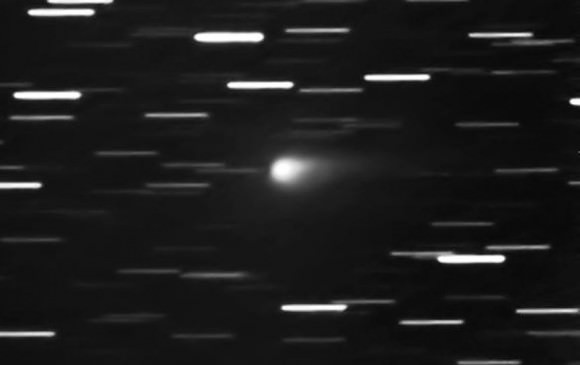
If you have a 10-inch or larger telescope, or you’re an experienced amateur with an 8-inch and pristine skies, 67P is within your grasp. The comet glows right around magnitude +12, about as bright as it will get this apparition. Periodic comets generally appear brightest around and shortly after perihelion or closest approach to the Sun, which for 67P/C-G occurred back on August 13.
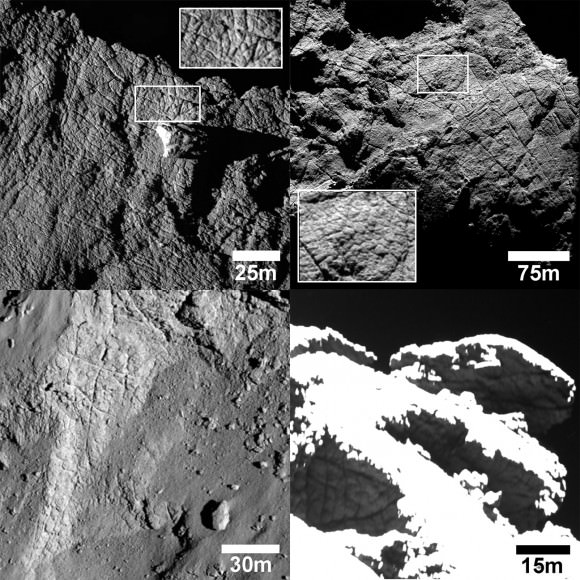
You’ll be looking for a small, 1-arc-minute-diameter, compact, circular patch of nebulous light shortly before dawn when it’s highest in the east. Rosetta’s Comet will spend the remainder of August slicing across Gemini the Twins north of an nearly parallel to the ecliptic. I spotted 67P/C-G for the first time this go-round about a week ago in my 15-inch (37 cm) reflector. While it appears like a typical faint comet, thanks to Rosetta, we know this particular rough and tumble mountain of ice better than any previous comet. Photographs show rugged cliffs, numerous cracks due to the expansion and contraction of ice, blowholes that serve as sources for jets and smooth plains blanketed in fallen dust.
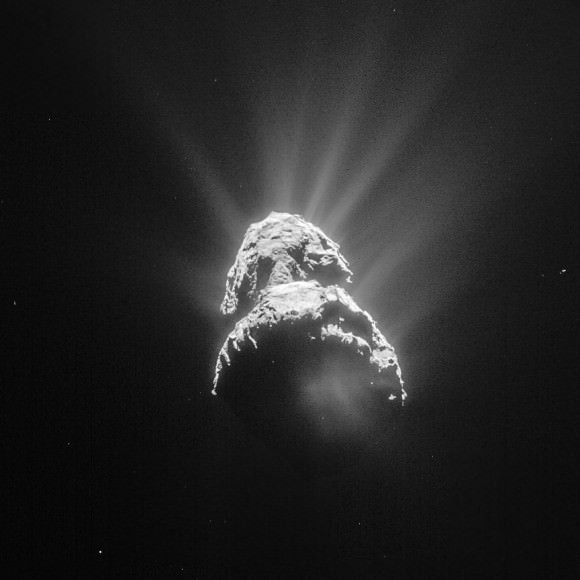
The jets are geyser-like sprays of dust and gas that loft grit and rocks from the comet’s interior and surface into space to create a coma or temporary atmosphere. This is what you’ll see in your telescope. And if you’re patient, you’ll even be able to catch this glowing tadpole on the move. I was surprised at its speed. After just 20 minutes, thanks to numerous field stars that acted as references, I could easily spot the comet’s eastward movement using a magnification of 245x.
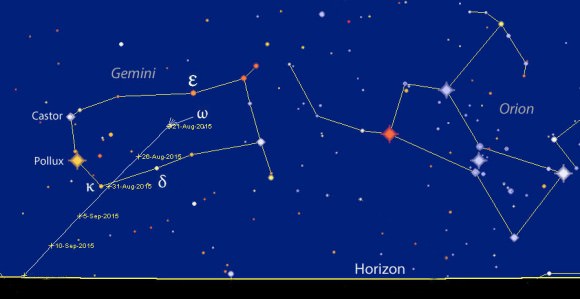
Tomorrow morning, 67P/C-G passes very close to the magnitude +5 star Omega Geminorum. While this will make it easy to locate, the glare may swamp the comet. Set your alarm for an hour before dawn’s start to allow time to set up a telescope, dark-adapt your eyes and track down the field where the comet will be that morning using low magnification.
Once you’ve centered 67P/C-G’s position, increase the power to around 100x-150x and use averted vision to look for a soft, fuzzy patch of light. If you see nothing, take it to the next level (around 200-250x) and carefully search the area. The higher the magnification, the darker the field of view and easier it will be to spot it.
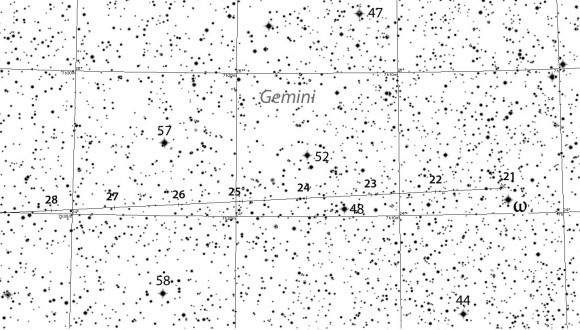
Besides being relatively faint, the comet doesn’t get very high in the east before the onset of twilight. Low altitude means the atmosphere absorbs a share of the comet’s light, making it appear even fainter. Not that I want to dissuade you from looking! There’s nothing like seeing real 67P photons not to mention the adventure and sense of accomplishment that come from finding the object on your own.
As we advance into late summer and early fall, 67P/C-G will appear higher up but also be fading. Now through about August 27 and again from September 10-24 will be your best viewing times. That’s when the Moon’s absent from the sky.
Given the comet’s current distance from Earth of 165 million miles and apparent visual size of just shy of 1 arc minute, the coma measures very approximately 30,000 miles across. Rosetta orbits the comet’s 2.5-mile-long icy nucleus at a distance of about 115 miles (186 km), meaning it’s snug up against the nuclear center from our point of view on the ground.
If you do find and follow 67P/C-G, consider sharing your observations with the Pro-Amateur Collaborative Astronomy (PACA) campaign to help increase our knowledge of its behavior. Interested? Sign up HERE.

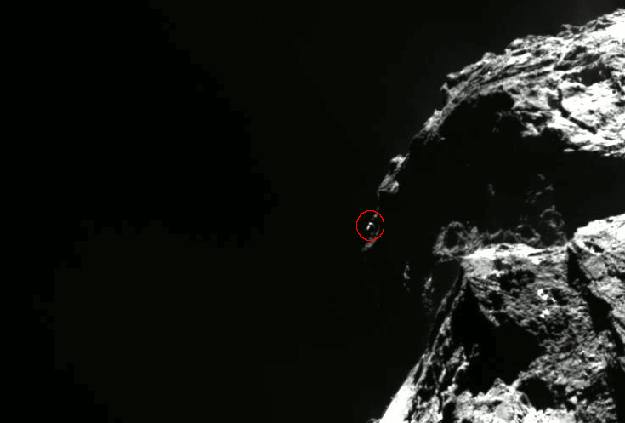
Hi Bob,
Can you do something about “Oh see how”‘s post.
It seems rather inappropriate.
Hi Pete,
Someone must have taken it down. I don’t see it here. Was it posted in this blog’s comments?
This is the most interesting Comet ever. But I must say it sort of gives me the creeps it has that ancient mummified relic kind of look about it that has just come alive….
When I first saw the animation at the top of this article, I thought… There goes Phillae! The lander got blasted back into space by an underlying jet! YIPPEE! Then I read the accompanying description. Long odds for sure.. but wouldn’t that be sweet?
Going to a star party at a nearby state park tonight. As far as I can tell, the elevation should be about 1,000 feet? I’m taking my 4″ S/C.. the 12 1/2″ Newt will have to wait until I know more about the site. The flyer said 8pm to midnight though.. so I probably won’t get a chance to see Chury-Gury…? The host’s have a couple of Orion Dobs.. but I don’t know how big they are.. OR if they are up to staying up?
Aqua,
I hope you have a blast. Stay up late anyway. I just returned from a star party, and there are always a few who remain till dawn. You should be able to see the comet OK in your 12 1/2″.